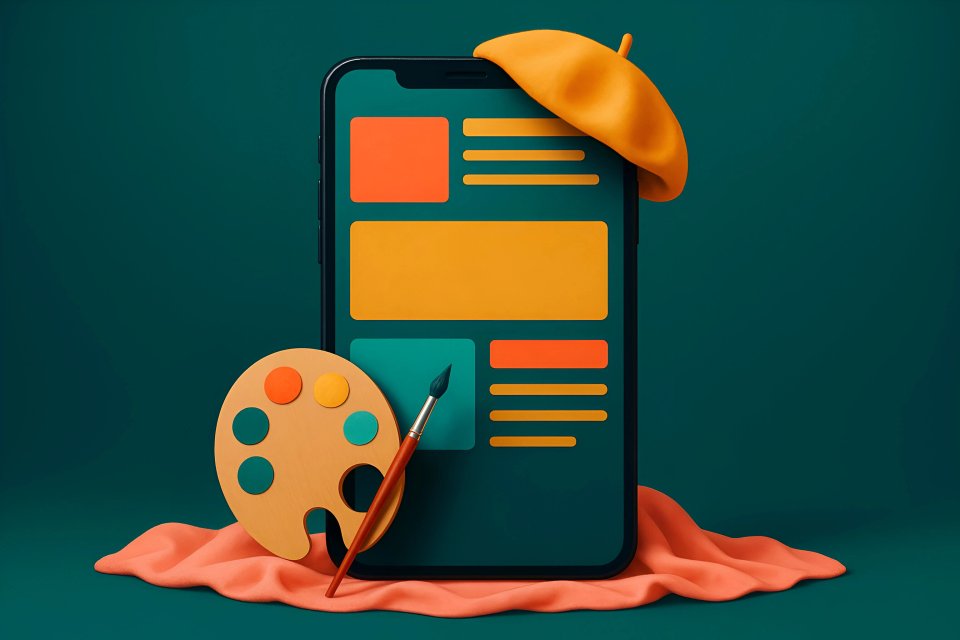Have you ever felt that jolt of confusion? You see a sleek, modern ad on Instagram that grabs your attention. You click, eager to learn more, only to land on a website that looks like it was designed a decade ago, with clashing colors and different fonts.
That jarring disconnect is more than just ugly; it’s a trust killer. An inconsistent visual identity is one of the fastest ways to sabotage your brand, making you look unprofessional and causing your audience to question your credibility. It’s a silent assassin for your marketing budget, undermining every dollar you spend.
This is your guide to dodging that bullet. We will walk you through the essential process of creating a consistent visual brand identity, from the bedrock of strategy to the final, comprehensive brand guidelines that will become your company’s north star.
Why Visual Branding Consistency is Your Greatest Asset
Before we dive into the "how," you need to understand the "why." Why does this matter so much? Because in a world saturated with noise, consistency is the secret weapon that turns fleeting attention into lasting loyalty.
It’s the foundation of unforgettable brand recognition. Think of the golden arches or the Nike swoosh; you know them instantly without a single word. According to industry analysis, a consistent brand presentation can increase revenue by up to 33%, because recognition breeds familiarity, and familiarity breeds trust. As seen in the meticulous guidelines for Nike's globally recognized brand, this isn't accidental; it's a deliberate strategy for market dominance.
This consistency fosters a deep sense of trust and credibility. A cohesive look across all your touchpoints—from your website to your business cards—signals that you are professional, reliable, and you care about the details. It differentiates you in a crowded market, carving out a unique space in your customer's mind and streamlining all your future marketing efforts, making every new campaign faster and more effective to launch.
The Foundation: Your Brand Strategy Blueprint
Stop. Before you even think about picking a color or sketching a logo, you must lay the foundation. Great design isn't just about making things look pretty; it’s the physical expression of a powerful strategy.
First, you must define your core identity. What is your mission? What are your core values? What is the unique personality of your brand—is it playful and witty like Slack, or sophisticated and authoritative like Uber? As detailed in examples of powerful brand guidelines, this internal clarity is the starting point for all external expression.
Next, you must intimately understand your ideal audience. Who are you trying to captivate? The visuals that resonate with a Gen Z audience on TikTok will be vastly different from those that appeal to C-suite executives on LinkedIn. Finally, you must analyze the competitive landscape to find the gaps, identifying opportunities to look, feel, and sound different from everyone else in your space.
CaptivateClick Expert Tip: This strategic phase is non-negotiable. Our approach to mastering business branding with a distinct visual identity ensures this foundation is rock-solid before our designers even open their sketchbooks.
The Core Components: Building Your Visual Toolkit
With your strategy firmly in place, it’s time to build the tangible assets of your brand. This is your visual toolkit—the core components that will represent you out in the world.
The Cornerstone: Actionable Logo Design Tips
Your logo is the face of your brand. It must be simple and memorable, a visual shorthand that sticks in the mind. The best logos, like those highlighted in the Eames Institute's creative brand guidelines, are built on principles of timelessness and versatility, ensuring they look just as powerful on a giant billboard as they do as a tiny app icon.
The Psychology of Color: Choosing Your Palette
Color evokes emotion faster than words ever can. Your brand should have a defined palette: a primary color that does the heavy lifting, one or two secondary colors for support, and an accent color for calls-to-action and highlights. As seen in Heineken's iconic style guide, the consistent use of their signature green is a masterclass in owning a color within an industry, instantly communicating their brand identity.
The Voice of Your Brand: Selecting Typography
Fonts have personality. A Serif font, with its small decorative strokes, can feel traditional, elegant, and trustworthy. A clean Sans-serif font often feels modern, approachable, and direct. Establish a clear hierarchy with one font for headlines and another for body text to create a consistent and readable experience for your audience.
Setting the Scene: Imagery, Photography, and Iconography
The images you use set the mood for your brand. Define a consistent style: are your photos warm, candid, and full of life, or are they cool, professional, and minimalist? This extends to iconography, where a consistent set of icons can unify your user interface and marketing materials, as demonstrated in the comprehensive Tonies brand style guide which even includes accessibility considerations.
The Rulebook: Mastering Brand Guideline Development
You’ve built your amazing visual toolkit. Now, how do you protect it? You create a rulebook—a comprehensive document known as your brand guidelines.
This document is the single source of truth for your brand's visual identity. It’s a manual that ensures every employee, freelancer, and partner agency uses your brand assets correctly and consistently, every single time. This isn't about stifling creativity; it's about providing a framework for it, just as the University of Portland's detailed identity guide empowers its various departments to communicate with a unified voice.
Your brand guideline document must be thorough. It needs to contain clear rules for everything you’ve created, ensuring your brand is presented flawlessly across every channel.
Essential Elements of Your Brand Guideline Document
- Logo Usage: Show clear rules on minimum size, required clear space around the logo, and, most importantly, how not to use it.
Never stretch, distort, or change the colors of the logo. - Color Palette: Provide the exact color codes for web, print, and digital applications. This means including the
HEX,RGB, andCMYKvalues for every color in your palette. - Typography Guidelines: Specify the font families, sizes, weights, and line spacing for all text elements, from H1 headlines to body copy and captions.
- Imagery Style Guide: Include a mood board and examples of on-brand photography, illustration, and graphic styles to guide content creators.
- Iconography: Display the official icon set and provide rules for its application, ensuring visual consistency in user interfaces and infographics.
CaptivateClick Expert Tip: We don’t just design your visuals and walk away. We deliver comprehensive brand guidelines to protect your investment and ensure your brand remains powerful and consistent as you grow. This is a core part of developing a unique brand identity with strategic visual guidelines.
Conclusion: From Consistent Visuals to a Captivating Brand
The path to a powerful brand is clear. You start with a deep, strategic understanding of who you are and who you serve. You then build your core visual elements—your logo, colors, and fonts—with purpose and intention. Finally, you codify everything in a comprehensive set of brand guidelines to ensure flawless execution.
A consistent visual brand identity isn’t about restriction; it’s about freedom. It empowers your team to create beautiful, on-brand materials with speed and confidence. It builds an unbreakable bond of trust with your audience, creating a stronger, more recognizable, and more profitable brand with every single interaction.
Ready to build a captivating brand that clicks with your audience? The team at CaptivateClick combines 15+ years of global design expertise with strategic marketing to build brands that stand out. Contact us today to discuss how to integrate your brand strategy with your website design.













